Best Monsoon Treks in Nepal
The allure of visiting Nepal during the monsoon season is undeniably captivating. While fall is recognized as the peak season, drawing numerous tourists, the monsoon, which spans from mid-June to early September, unveils a different facet of Nepal's beauty. This season, despite the prevalent conception of constant rains from June to August, brings forth trekking opportunities that are uniquely suited for the monsoonal rains.
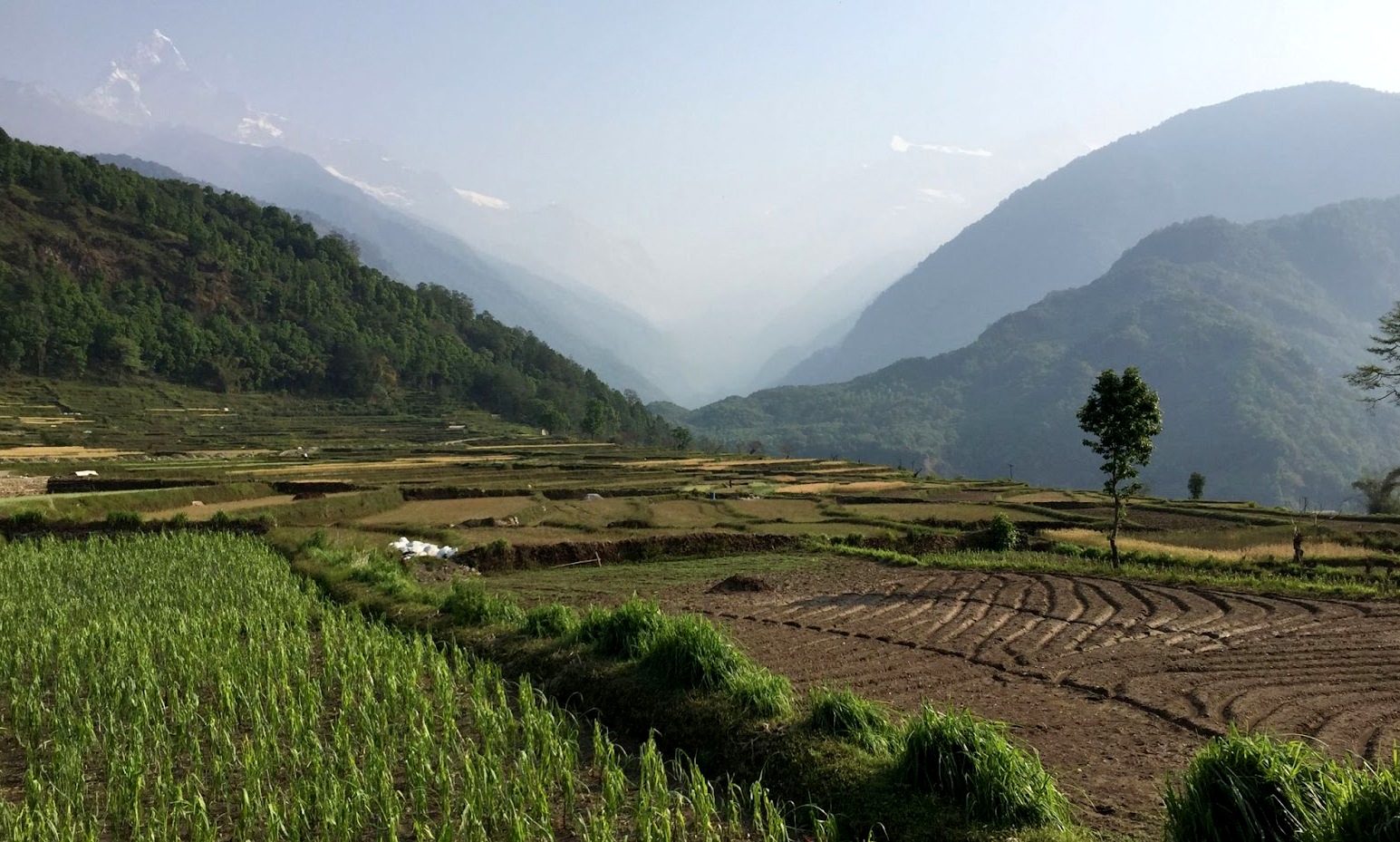
Although the fall season boasts predominantly clear skies, monsoon presents its own set of merits: paths are less congested, local towns brim with vivacity, and the valleys showcase a vibrant bloom. However, it's worth noting that high-altitude trekking is typically not recommended during this season due to obscured mountain vistas, unpredictable travel schedules, and potential flight delays. Yet, this doesn't detract from Nepal's charm, as the country offers numerous trekking routes optimal for both rain-soaked excursions and getaways.
What makes some parts of Nepal accessible during this time is its unique geography. Several regions lie in the rain shadow, protected by the mighty Himalayan Peaks. These peaks force the typically moist airstreams on their windward side to become arid on the leeward side, resulting in minimal rainfall in these areas. This phenomenon renders these specific destinations perfect for travel during the rainy season.
Lower Dolpo Trek
The Lower Dolpo Trek is renowned for its remote beauty, offering a blend of adventure, culture, and stunning landscapes, making it one of the best monsoon treks in Nepal. This trek takes you through the heart of the Dolpo region, an area that captivates with its untouched natural beauty, rich cultural heritage, and the majestic Phoksundo Lake. Here are the key highlights of the Lower Dolpo Trek:

Untouched Natural Beauty
- Phoksundo Lake: Experience the crystal-clear turquoise waters of Phoksundo Lake, Nepal's deepest and second-largest lake, set against a backdrop of spectacular cliffs and forests.
- Shey Phoksundo National Park: Traverse through diverse landscapes within Shey Phoksundo National Park, including lush forests, arid mountains, and traditional Tibetan villages, offering a haven for endangered species like the snow leopard and the blue sheep.
Rich Cultural Heritage
- Bon and Tibetan Buddhism: The trek offers a deep dive into the ancient Bon religion and Tibetan Buddhism, with opportunities to visit centuries-old monasteries and learn about local traditions and rituals.
- Traditional Villages: Immerse yourself in the culture of remote Himalayan villages, where life remains as it has for centuries, providing a rare glimpse into the daily lives and customs of the Dolpo people.
Adventurous and Remote Trekking
- Isolated Trails: The Lower Dolpo Trek is known for its remote and less trodden paths, offering trekkers a sense of adventure and isolation that is hard to find in more popular trekking areas.
- High Mountain Passes: Challenge yourself with the crossing of high mountain passes such as Numa La and Baga La, which provide stunning panoramic views of the surrounding Himalayas.
Ideal for Monsoon Season
- Rain Shadow Area: Positioned in the rain shadow of the Dhaulagiri and Annapurna ranges, the Lower Dolpo region receives significantly less rainfall, making it an excellent trekking destination during the monsoon months.
Sustainable Tourism
- The trek promotes sustainable tourism practices, ensuring minimal environmental impact and supporting the conservation of the region's unique biodiversity and cultural heritage.
Breathtaking Scenery
- The journey is marked by breathtaking natural scenery, from deep valleys and towering peaks to the serene beauty of Phoksundo Lake, offering trekkers an unparalleled experience of the Himalayas.
The Lower Dolpo Trek not only offers an escape into one of Nepal's most pristine natural environments but also provides a profound cultural experience. It stands out as a prime choice for those looking to explore the Himalayas during the monsoon season, offering a unique blend of adventure, solitude, and cultural immersion.
Shey Phoksundo Lake Trek
The Shey Phoksundo Lake Trek is a captivating journey that leads adventurers to one of the most stunning natural wonders in Nepal, Shey Phoksundo Lake. This trek is an ideal choice for those looking to explore the beauty of the Nepalese Himalayas during the monsoon season, thanks to its location in the Dolpo region, which lies in the rain shadow of the Himalayas. Here are the major highlights that make the Shey Phoksundo Lake Trek one of the best monsoon treks in Nepal:
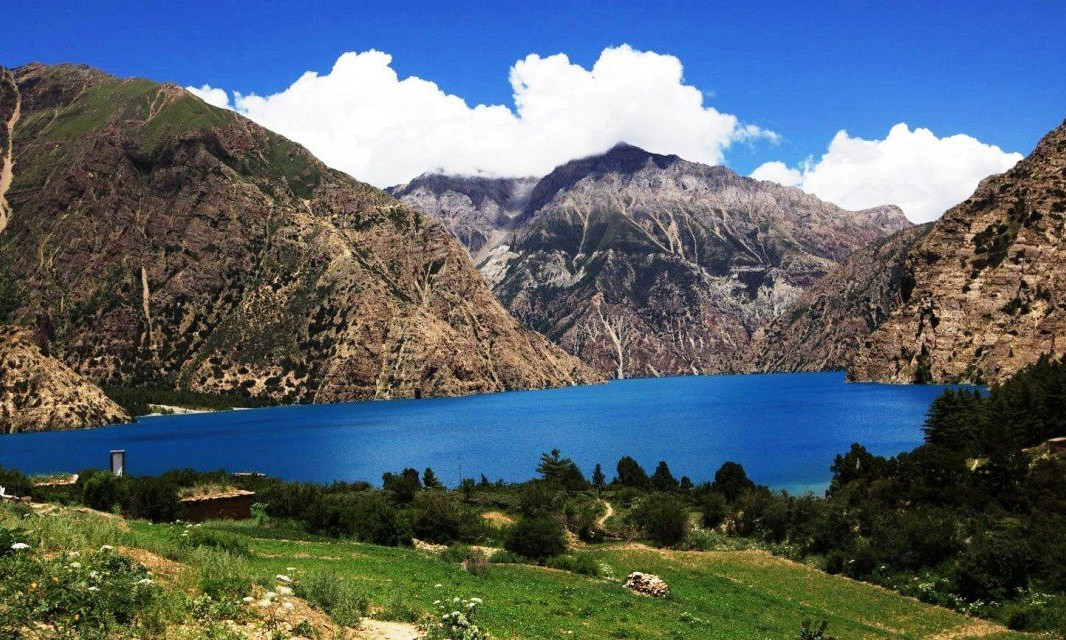
Tsum valley and Manaslu Trek
The Tsum Valley and Manaslu Trek is a remarkable journey that combines the majestic beauty of the Manaslu region with the serene and culturally rich Tsum Valley. Known for its breathtaking landscapes, unique cultural heritage, and relatively untouched trails, this trek offers an extraordinary experience, especially during the monsoon season. Here are the key highlights of the Tsum Valley and Manaslu Trek, making it one of the best monsoon treks in Nepal:
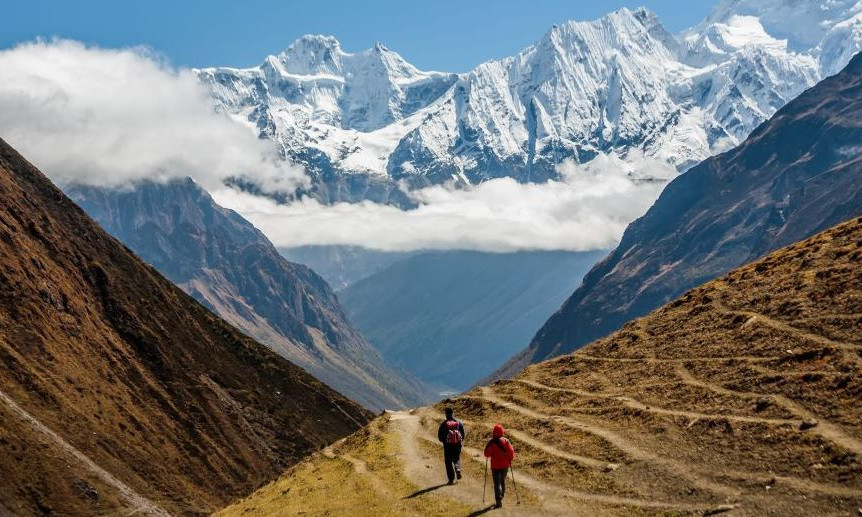
Stunning Natural Beauty
- Manaslu Circuit: Trek around the world's eighth-highest mountain, Manaslu, with its stunning vistas, diverse ecosystems, and dramatic high-altitude landscapes.
- Tsum Valley: Known as the "hidden valley," Tsum Valley is a bastion of ancient art, culture, and religion, with beautiful landscapes that include deep gorges, hamlets, and ancient monasteries set against the backdrop of the towering Himalayas.
Rich Cultural Experience
- Buddhist Heritage: Both the Tsum Valley and Manaslu region are rich in Tibetan Buddhist culture. Trekkers can explore ancient monasteries, chortens, and mani walls that reflect the spiritual lifestyle of the inhabitants.
- Traditional Villages: The trek passes through traditional Tibetan villages, where the lifestyle has remained unchanged for centuries. This provides a unique opportunity to witness the daily lives and cultural practices of the local communities.
Adventure and Solitude
- Remote Trails: The trek offers a journey through less-trodden paths, ensuring a sense of adventure and solitude. The Manaslu Circuit and Tsum Valley are less crowded compared to other trekking destinations in Nepal, offering a more peaceful and authentic experience.
- High Passes: The trek includes crossing the Larkya La Pass, one of the most dramatic passes in the Himalayas, offering stunning views of the Manaslu range and beyond.
Ideal for Monsoon Season
- Rain Shadow Effect: Parts of the Tsum Valley and Manaslu Trek lie in a rain shadow area, making it a suitable trekking destination during the monsoon season. The region receives significantly less rainfall, ensuring clearer trails and views even during the wet months.
Sustainable and Responsible Trekking
- Conservation Efforts: The trek encourages sustainable tourism practices, with a focus on preserving the natural and cultural heritage of the Manaslu and Tsum Valley regions. Trekkers are urged to respect the environment and contribute to the local economy.
Diverse Flora and Fauna
- The trek traverses through varied ecosystems, from lush forests to arid high-altitude landscapes, home to diverse flora and fauna, including endangered species like the snow leopard and the red panda.
The Tsum Valley and Manaslu Trek not only challenges trekkers physically but also offers them a profound spiritual and cultural experience. It stands out as one of the best monsoon treks in Nepal, offering unparalleled natural beauty, rich cultural insights, and the adventure of exploring some of the most remote and pristine areas of the Himalayas.
Annapurna Circuit Trek
The Annapurna Circuit Trek is one of Nepal's most renowned and classic treks, offering an incredibly diverse trekking experience that showcases some of the most spectacular landscapes and cultural diversity in the Himalayas. Despite the popularity of the Annapurna region, the monsoon season brings a unique charm to the trek, making it a compelling choice for those willing to embrace the rain for lush landscapes and fewer crowds. Here are the key highlights of the Annapurna Circuit Trek during the monsoon season:
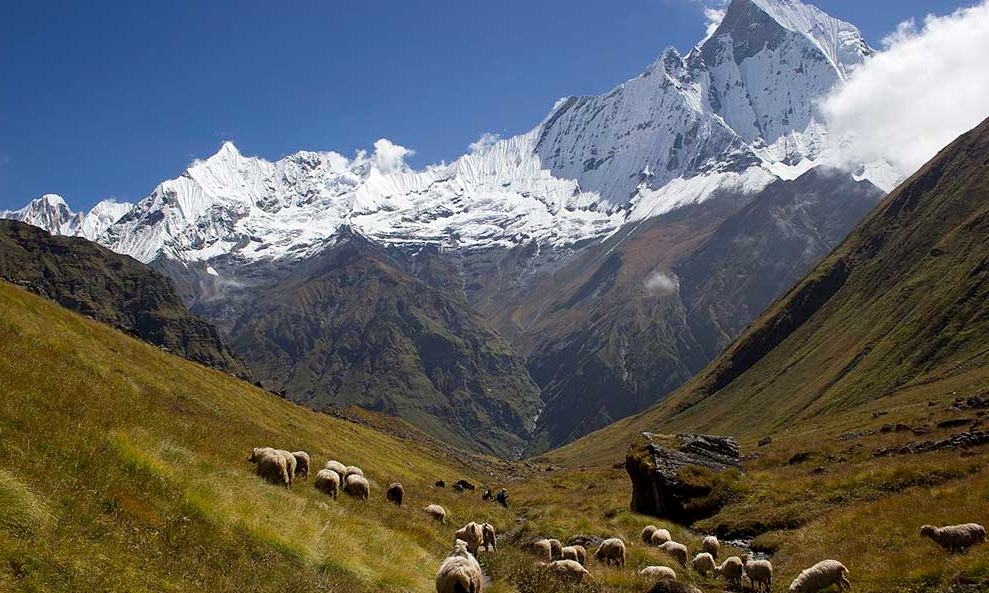
Diverse Landscapes
- The trek circles the Annapurna massif, presenting trekkers with a wide range of scenery, from lush subtropical forests and terraced rice paddies to arid high mountain landscapes and the deep gorges of the Kali Gandaki.
- As the trek progresses, the environment transitions dramatically, offering views of some of the highest peaks in the world, including Annapurna I, Dhaulagiri, and Manaslu.
Cultural Richness
- The Annapurna Circuit passes through diverse ethnic communities, including Brahmin, Chhetri, Tibetan, and Gurung villages, allowing trekkers to experience a rich tapestry of cultures and traditions.
- Trekkers have the opportunity to visit ancient monasteries, temples, and stupas, immersing themselves in the spiritual heritage of the region.
Thorong La Pass
- Crossing the Thorong La Pass, at an elevation of 5,416 meters (17,769 feet), is a highlight and challenge of the trek, offering breathtaking panoramic views of the Annapurna range and beyond.
Monsoon Magic
- During the monsoon, the landscapes come alive with vibrant greenery, blooming flowers, and cascading waterfalls, offering stunning photographic opportunities.
- The monsoon season also means fewer trekkers on the trail, providing a more solitary and intimate experience with nature.
Rain Shadow Areas
- Parts of the Annapurna Circuit, especially the northern sections around Mustang, lie in the rain shadow of the Himalayas, receiving significantly less rainfall and making it a viable option for trekking during the monsoon season.
Natural Hot Springs
- The trek offers the chance to relax in natural hot springs, such as those at Tatopani, providing a perfect way to soothe muscles after days of trekking.
Conservation and Sustainable Tourism
- The Annapurna Circuit Trek is part of the Annapurna Conservation Area Project (ACAP), promoting sustainable tourism practices and conservation efforts to preserve the natural and cultural heritage of the region.
Adventure and Accessibility
- While challenging, the trek is accessible to most people with a good level of fitness and offers various side trips and extensions, including Tilicho Lake, the world's highest-altitude lake.
The Annapurna Circuit Trek during the monsoon season is an exceptional journey that not only tests a trekker's endurance but also enriches their understanding of the natural and cultural wonders of Nepal. The lush landscapes, fewer crowds, and the unique experience of trekking in the rain make it a captivating choice for those looking for an adventure during the monsoon months.
Everest Base Camp Trek
The Everest Base Camp Trek is one of the most iconic and sought-after trekking destinations in the world, offering an unparalleled journey into the heart of the Himalayas. Trekking to the base camp of Mount Everest during the monsoon season presents a unique set of challenges and rewards, providing a different perspective on the beauty and grandeur of the Everest region. Here are the key highlights of the Everest Base Camp Trek during the monsoon season:
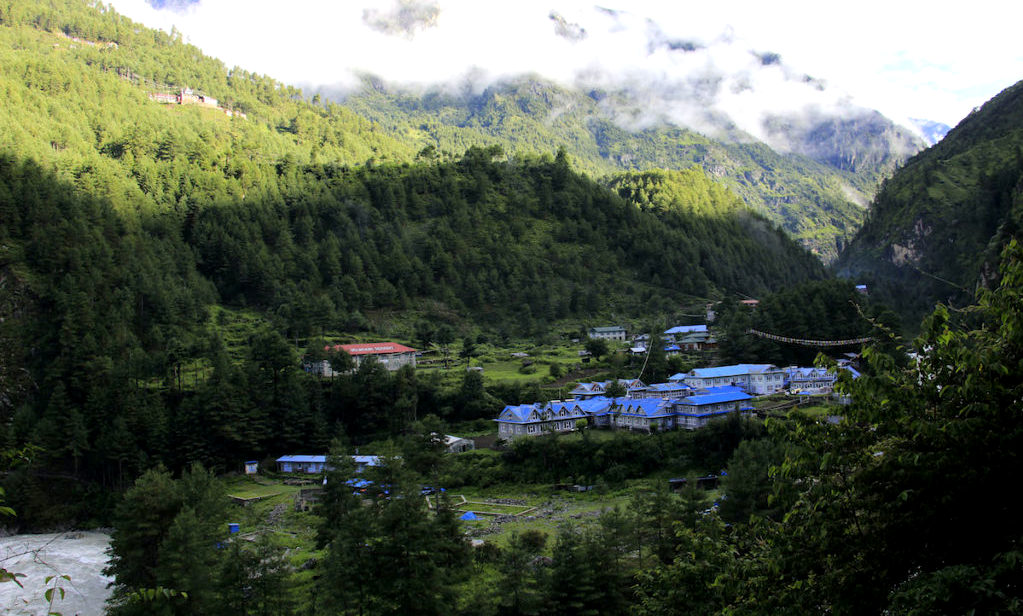
Spectacular Scenery
- The trek offers awe-inspiring views of some of the highest peaks in the world, including Mount Everest, Lhotse, Nuptse, and Ama Dablam, with the monsoon rains washing the landscapes clean, resulting in clearer and fresher air post-rain showers.
- The journey through the Sagarmatha National Park is enriched with lush vegetation, blooming wildflowers, and vibrant greenery during the monsoon, offering a stark contrast to the stark, rugged beauty of the high-altitude landscapes.
Cultural Immersion
- The Everest Base Camp Trek traverses through traditional Sherpa villages, providing trekkers with an opportunity to immerse themselves in the rich cultural heritage of the Sherpa people, known for their mountaineering prowess and deep-rooted Buddhist traditions.
- Visiting ancient monasteries like Tengboche Monastery offers insight into the spiritual life of the Himalayan communities, with the monsoon season often coinciding with local festivals and rituals.
Lower Crowds
- One of the advantages of trekking during the monsoon season is the reduced number of trekkers on the trail, offering a more solitary and intimate experience with the majestic landscapes of the Everest region.
Challenging Weather Conditions
- Trekking during the monsoon means preparing for wet conditions, with daily rain showers typically occurring in the afternoon. However, mornings often start clear and sunny, providing excellent hiking conditions and views.
- The trails can be slippery and muddy, requiring good waterproof gear and trekking boots with a strong grip.
Rain Shadow Effect
- Parts of the trek, especially as you get closer to Everest Base Camp, are somewhat sheltered from the heaviest monsoon rains due to the rain shadow effect of the high mountains, making it possible to trek during this season.
Diverse Flora and Fauna
- The Sagarmatha National Park, a UNESCO World Heritage Site, is home to a variety of flora and fauna, which are more visible during the monsoon season. Trekkers might spot rare species like the Himalayan Tahr, and musk deer, or even glimpse the elusive snow leopard.
Everest Base Camp and Kala Patthar
- Reaching Everest Base Camp itself is an extraordinary achievement, offering trekkers a close-up view of the Khumbu Icefall and glacier. Climbing Kala Patthar provides the best panoramic views of Mount Everest and the surrounding peaks, a moment that is often highlighted as the pinnacle of the trek.
The Everest Base Camp Trek during the monsoon season offers a unique adventure for those willing to face the challenges of the weather. With the right preparation and equipment, trekkers can enjoy the lush landscapes, clearer views after rainfalls, and a quieter trail, making it a memorable journey to the base of the world's highest peak.
Nar Phu Valley Trek
The Nar Phu Valley Trek is a captivating journey into one of Nepal's most remote and untouched regions, offering a blend of high-altitude adventure, ancient culture, and stunning natural beauty. This trek takes you through the hidden valleys of Nar and Phu, nestled between the more visited Annapurna and Manaslu regions. Trekking in the Nar Phu Valley during the monsoon season presents a unique opportunity to experience the lush landscapes and vibrant cultures of this secluded area with fewer tourists. Here are the key highlights of the Nar Phu Valley Trek during the monsoon:
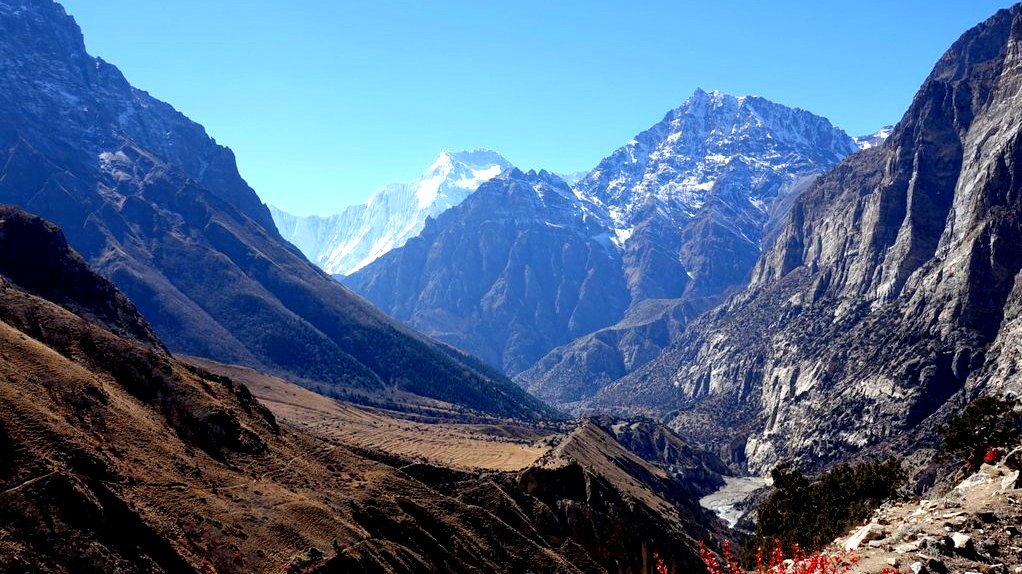
Remote and Pristine Nature
- The trek navigates through narrow canyons, dense forests, and ancient, unspoiled villages, with the monsoon rains bringing the landscapes to life, highlighting the vibrant greens and the blooming of wildflowers.
- The valley is home to exotic wildlife, including snow leopards and blue sheep, offering a rare glimpse into the biodiversity of the Himalayan ecosystem.
Rich Cultural Experience
- The Nar Phu Valley is predominantly inhabited by the Bhotias, a Tibetan Buddhist community, providing trekkers with an immersive cultural experience. Their unique customs, traditions, and the ancient monasteries of Nar and Phu are reflective of the centuries-old Tibetan heritage that is still preserved in this isolated region.
- Visiting during the monsoon might also coincide with local festivals, offering a deeper insight into the community's way of life.
Stunning High Mountain Passes
- The trek includes crossing challenging passes such as the Kang La Pass, which offers spectacular views of the Annapurna massif, Manaslu, Dhaulagiri, and numerous other peaks, providing a rewarding experience for those seeking adventure.
- Despite the monsoon, the high altitude of these passes means they receive less rainfall, making them accessible and offering clear, dramatic views following monsoon showers.
Serene and Solitary Trails
- Unlike the more popular trekking routes in Nepal, the Nar Phu Valley Trek remains relatively untouched by mass tourism, especially during the monsoon season. This provides a serene trekking experience, with the trails and villages offering a sense of solitude and untouched beauty.
Challenges of Monsoon Trekking
- The monsoon season brings with it the challenge of slippery trails and the possibility of landslides in certain areas. However, the region's geography offers some protection from the heaviest rains, and mornings often start with clear skies, providing good trekking conditions.
- The lush landscapes and the chance to see the valleys in their most vibrant state more than compensate for the challenges posed by the weather.
Sustainable and Responsible Trekking
- The trek to Nar and Phu valleys encourages sustainable tourism practices, with a focus on preserving the natural environment and the cultural heritage of the local communities. Trekkers are urged to respect the delicate ecosystem and the traditional way of life of the valley's inhabitants.
The Nar Phu Valley Trek during the monsoon season is an adventure for those looking to explore off-the-beaten-path destinations in Nepal. It offers a unique combination of natural beauty, rich culture, and solitude, providing an unforgettable experience for the intrepid trekker willing to embrace the challenges and rewards of monsoon trekking in the Himalayas.
Tips for Monsoon Treks in Nepal
Embarking on a trek in Nepal during the monsoon season can be a rewarding experience, offering lush landscapes, vibrant culture, and solitude on the trails. However, it also comes with its own set of challenges. Here are some essential tips to ensure a successful monsoon trek in Nepal:
Choose the Right Trek
- Opt for Rain Shadow Areas: Select treks in regions that receive less rainfall, such as Upper Mustang or parts of Dolpo, which are in the rain shadow of the Himalayas.
- Consider Lower Altitudes: Lower altitude treks can be more comfortable and less risky during the monsoon.
Pack Appropriately
- Waterproof Gear: Invest in a good quality waterproof jacket, pants, and a backpack cover. Waterproof trekking boots are also essential.
- Quick-Dry Clothing: Bring quick-dry clothes that will help you stay comfortable even if you get wet.
- Protection Against Leeches: Carry salt or leech repellent, and consider wearing leech socks.
Be Prepared for the Weather
- Start Early: Mornings are usually clearer, so starting your trek early can help you avoid rain later in the day.
- Plan for Delays: The weather can be unpredictable, so factor in extra days for your trek in case of delays.
Embrace the Mud and Rain
- Accept Getting Wet: Even with the best gear, you might get wet. Embrace the experience as part of the monsoon trekking adventure.
- Trek Slowly and Carefully: Trails can be slippery; walk slowly and use trekking poles for additional support.
Stay Healthy
- Drink Purified Water: Always drink purified water to avoid waterborne diseases, which can be more prevalent during the monsoon.
- Protect Yourself from Insects: Use insect repellent to protect against mosquitoes and leeches.
Respect Local Cultures and Environment
- Cultural Sensitivity: Be respectful of local customs and traditions, especially when visiting remote villages.
- Leave No Trace: Carry back all your trash and minimize your environmental impact.
Ensure Proper Acclimatization
- If your trek involves high altitudes, make sure to include days for acclimatization to avoid altitude sickness, even though the focus is on dealing with the monsoon.
Stay Informed
- Weather Updates: Keep an eye on weather forecasts and be prepared to adjust your plans accordingly.
- Local Advice: Listen to locals and your guides; they have the best knowledge about the conditions and can advise you on safety.
Enjoy the Unique Experience
- Embrace the Beauty: The monsoon season brings out a different kind of beauty in the landscapes, with lush vegetation and waterfalls at their prime. Enjoy the unique experience and the solitude it offers on popular trails.
By following these tips and being prepared for the conditions, you can have a memorable and enjoyable monsoon trekking experience in Nepal.
Trekking in Nepal during the monsoon season unveils a world of lush landscapes, vibrant cultures, and fewer crowds, offering a unique experience for those willing to embrace the rain. From the remote Nar Phu Valley with its ancient Tibetan cultures to the iconic Everest Base Camp, the serene Annapurna Circuit, the mystical Tsum Valley and Manaslu Trek, and the hidden treasures of Lower Dolpo and Shey Phoksundo Lake, each trek presents its own set of challenges and rewards. The monsoon showers bring the Himalayas to life, revealing verdant valleys, blooming flowers, and clear, fresh vistas post-rainfall. For adventurers seeking solitude, cultural richness, and the beauty of nature in its most vibrant state, these treks offer an unparalleled opportunity to explore Nepal's diverse landscapes and traditions, making monsoon trekking a truly unique and enriching experience.
FAQs: Best Monsoon Treks in Nepal
Q: What makes monsoon treks in Nepal unique?
A: Monsoon treks in Nepal are unique due to the lush landscapes, vibrant greenery, and fewer crowds. This season transforms the trails into a vivid spectacle of blooming flowers and sparkling clear views post-rain, offering a distinct trekking experience.
Q: Can I trek to Everest Base Camp during the monsoon?
Yes, you can trek to Everest Base Camp during the monsoon. While there will be rain, the region experiences clearer mornings and the trails are less crowded. Adequate preparation for wet conditions is essential.
Q: Are the trails safe during the monsoon season?
A: Trails can be slippery and more challenging during the monsoon. It's important to have good waterproof gear and be prepared for possible delays due to weather conditions. Some regions like Upper Mustang or Nar Phu Valley are in rain shadow areas, making them safer options during monsoon.
Q: What should I pack for a monsoon trek in Nepal?
A: Packing waterproof clothing, a sturdy pair of waterproof boots, a rain cover for your backpack, and insect repellent is essential. Also, pack quick-dry clothing and ensure you have a good quality waterproof jacket and pants.
Q: How do I deal with leeches on monsoon treks?
A: Wearing leech socks or tucking your trousers into your socks can help prevent leeches from reaching your skin. Applying salt or insect repellent on your boots and lower pants can also deter them.
Q: Will I be able to enjoy clear mountain views during the monsoon?
A: While the monsoon brings rain, mornings often start clear, offering beautiful views. The rain also clears the air of dust and pollution, potentially offering even clearer views after showers.
Q: What are the best monsoon treks for experiencing local culture?
A: Treks like the Nar Phu Valley Trek Tsum Valley and Manaslu Trek are excellent for immersing in local culture. These regions are less visited and maintain rich cultural traditions, providing a deeper cultural experience.
Q: Is it possible to avoid the rain entirely on a monsoon trek?
A: While it's unlikely to avoid the rain entirely, choosing treks in rain shadow areas like Upper Mustang or parts of Dolpo can minimize exposure to rain. Early mornings are typically clearer, so starting your trek early in the day can also help.
Q: Are permits required for monsoon treks in Nepal?
A: Yes, permits are required for most treks in Nepal, including during the monsoon season. Specific permits depend on the trekking region, such as the TIMS card, National Park permits, or restricted area permits for places like Nar Phu Valley.
Q: Can beginners undertake monsoon treks in Nepal?
A: Beginners can undertake certain monsoon treks in Nepal, but it's important to choose routes that match your fitness level and experience. Treks with lower altitudes and shorter distances are recommended for beginners. Always consider hiring a guide or joining a guided trek for safety and a better experience.
If you need any further information, please contact us by email: [email protected], Phone: +977- 985 100 5129 (WhatsApp)
#Tags
Tripadvisor
5.0910 reviewsGoogle
4.8110 reviewsFacebook
4.1 recommend44 ReviewsTrustpilot
4.1 Great(5 reviews)- Trusted by50K plus traveller




